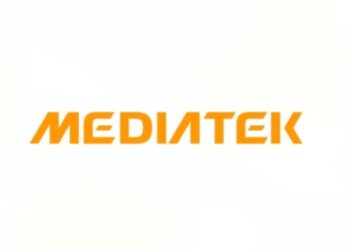Cybercrime cases have drastically increased in recent times. A report says 91% of cyber attacks start from email. Targeting via email is the most favorable method for cybercriminals to infiltrate your system and your organization’s IT infrastructure. In an exclusive interview with CXO VOICE, Sundaresan Kanappan, VP and Country General Manager of Tech Data India, explains various points related to email security, its importance, roles, how organizations should manage it to tackle emerging threats.
What is the email security, and its role in securing enterprise networks?
Sundaresan Kanappan: On average, each of us receives about 100 emails daily, and globally about 300 billion emails are sent and received daily. With such high volumes, email is the number one vector for cyberattacks, with 91% of all cyberattacks starting via email.
Email security protects email accounts and communications from unauthorized access, loss of information, or compromise from malicious threats, including spam, malware, and phishing attacks.
Because emails were designed to be as open and accessible as possible, they can be intercepted by any viewer. This is especially the case with enterprise networks, wherein emails being a popular mode of communication, are also a common entry point for cybercriminals.
Email security combines tools such as Secure Email Gateway (SEG), Domain-based Message Authentication, Reporting & Conformance (DMARC), and email encryption solutions for enterprise networks that typically have large infrastructure setups.
It can also incorporate emerging technologies and techniques, such as Artificial Intelligence (AI) and Machine Learning (ML), to further strengthen email defense and resilience strategies.
What are the top email security threats for organizations, and how to tackle them?
Sundaresan Kanappan: Some of the top email security threats include:
1. Phishing is the most prevalent type of email security threat, where attackers send a fraudulent email, often pretending to be a well-known and trusted brand. It is designed to trick individuals into disclosing sensitive personal information, including usernames, passwords, and credit card details.
According to the IC3 Internet Crime Report released by the FBI in March this year, phishing variants accounted for 69.4% of reported cybercrimes. The number of phishing attacks has tripled since 2020.
2. Ransomware attacks are the most public and high-profile email security threats, especially in incidents where large volumes of user data are stolen or where the services and operations of the target company are disrupted. Earlier this year, CISA, the FBI, NSA, and other international partners issued an advisory stating that ransomware groups have an increasing impact due to approaches targeting the cloud, managed service providers, industrial processes, and the software supply chain.
Ransomware is now a sophisticated industry with ‘professional’ organized crime groups offering ‘Ransomware-as-a-Service’ (RaaS) services for hire, including exploit kits and 24/7 support centers.
3. Business Email Compromise (BEC) attacks have become increasingly common and complex since the COVID-19 pandemic began, in tandem with the proliferation of remote work. No longer limited to just email, fraudsters use virtual meeting platforms (like Microsoft Teams or Zoom) to impersonate a CEO or CFO to instill a sense of trust, claiming that they are having audio or video problems (a common occurrence for remote workers) and then sending instructions via message or email to send confidential information or a wire transfer. These transfers are generally immediately placed into crypto wallets and moved around, making recovery of the funds incredibly difficult.
How to recognize malicious emails?
Sundaresan Kanappan: Some important signs end-users can look out for include:
a. Inconsistencies in email addresses, URLs, and company domains: It is always important to be able to verify whether an email is actually from its apparent sender. Inconsistencies include email addresses that are different from the name on the account and domain names that are similar but not exactly the same.
b. Request for personal information: Most legitimate organizations will never ask for your personal information via the internet. For example, if an email supposedly from your bank asks for your bank account number, it should definitely raise a red flag.
c. Suspicious attachments: Even if an attachment is from a seemly trustworthy source, it is prudent to check the attachment or not to open the file if it seems suspicious. This is since malicious code or programmes can be embedded into attachments and installed once they are opened.
d. Poor grammar: Some phishing attacks tend to originate from foreign countries where English is not the first language. Hence, keep a lookout for grammatical errors.

Is the Application’s built-in security enough to tackle the security threats via email?
Sundaresan Kanappan: Traditional email security solutions tend to work on the outside by changing the Mail Exchanger record (MX record) and using technologies such as antivirus protection, data encryption, and spam filters to create a protective boundary around your inbox to not let any malware come through.
Built-in security needs to be absolutely robust to deal with security threats via email. Given this scenario, Tech Data recently strengthened its security portfolio in partnership with MailGuard – a world leader in email security. This partnership allows Tech Data to add MailGuard 365 — a solution built by MailGuard in collaboration with the Microsoft team that is integrated natively in Azure, to protect the more than 345 million Microsoft 365 subscribers — to its cyber security go-to-market portfolio in the Asia Pacific and Japan region.
A world-first evolutionary approach, MailGuard 365 is the last email security engine, designed to target and stop email threats by re-scanning inbound emails after the Microsoft 365 security stack (including Microsoft Defender) has done its security threat assessment.
How should organizations manage email security?
Sundaresan Kanappan: Adopting a multi-layered approach to email security is ideal. No single vendor can defend against every threat. If a business is using Microsoft 365, even with Defender, or Google Workspace, they should still deploy an additional specialist layer of email security to enhance their protection. Industry experts refer to it as a ‘defense-in-depth’ approach, and it’s what motivated MailGuard to co-build MailGuard 365 in collaboration with Microsoft engineers. Speed to detect and stop new threats is vital, and MailGuard 365 is up to 48 hours faster at blocking emerging zero-day threats.
Additionally, businesses must take a holistic approach to their email security, like considering password management and best practices such as mandating multi-factor authentication and investing in cyber awareness training for their workforce.
Please tell me about the recent Tech Data – MailGuard partnership.
Sundaresan Kanappan: With this partnership, Tech Data aims to support MailGuard in further strengthening its presence across the Asia Pacific (APAC) market. This will be realized through Tech Data’s capabilities and reach across the diverse APAC region. MailGuard365: MailGuard’s Integrated Cloud Email Security (ICES) solution will now be exclusively available in 6 countries across the APAC region: Hong Kong, India, Indonesia, Malaysia, Singapore, and Vietnam.
MailGuard365 is native to Microsoft, allowing Microsoft customers to activate MailGuard 365 from within Microsoft itself. Given that Tech Data is an indirect Microsoft CSP, this is another reason why MailGuard chose to partner with us. A solution like MailGuard365 also aligns with our holistic approach to cyber security and strengthens Tech Data’s cloud security and cybersecurity portfolios.
How does Tech Data manage security across its offerings, including cloud services?
Sundaresan Kanappan: Tech Data’s partnerships with the world’s leading cloud security-as-a-service vendors ensure that our partners are able to provide their clients with industry-leading cybersecurity that features the most up-to-date and thorough services. This enables our partners to deliver cloud-based products for businesses of all sizes and needs, whether it is endpoints, email, or web protection.
Our extensive cloud services portfolio enables channel partners to assess, migrate, optimize, and manage customer workloads and applications to accelerate their transformation and modernize their IT environments. Tech Data works hand-in-hand with partners to provide the necessary level of expertise to support end-users in maximizing the benefits of cloud computing.
Our partnership with MailGuard is in line with Tech Data’s overall strategy of empowering Independent Software Vendors (ISVs) and other partners. ISVs, in particular, have intellectual property and vertical market solutions, which may require MailGuard 365-type embedded email security solutions.
The inclusion of MailGuard into our portfolio also enables partners, especially those who are selling Microsoft, to drive better yields and generate higher revenue with existing customers.
END.
Also Read: The Emergence of Spyware, Zero Click Attacks, Smishing, and Store Security























